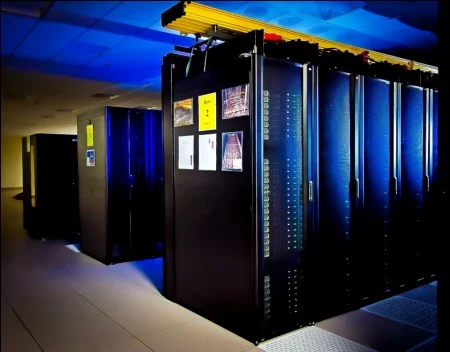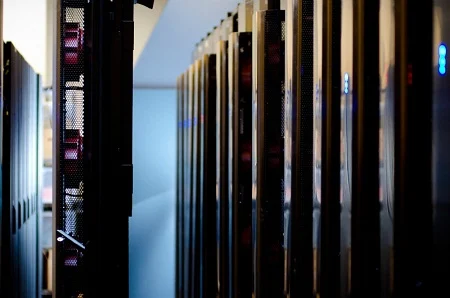Scientists working to tackle our energy challenges at the U.S. Department of Energy’s Pacific Northwest National Laboratory in Richland, Wash., just got a powerful new weapon.
While there’s no cape, the Olympus supercomputer does sport some superhero-like powers. It can’t fly, but it could perhaps help scientists figure out how with its ability to process computations as fast as 20,000 personal computers combined.

The supercomputer’s enormous disk bandwith – 80 gigabytes per second – allows it to read and write information to a disk 800 times faster than a personal computer, and it can hold 38.7 terabytes of memory.
If you’re like us and were a little fuzzy on the prefix “tera,” it means 10 to the 12th power. So 38.7 terabytes is almost 39 trillion bytes. You get the picture; this is a very powerful computer combining with some very bright minds.
Not only is Olympus changing how lab researchers process information, it is also encouraging a new kind of collaboration. As you can imagine, this type of computer can command a high price tag so instead of continuing the old system where research teams at the lab purchased small computer systems for their individual projects, they pooled together their project funding to help cover the $4.4 million for purchase and installation.
When doing this massive number of computations, Olympus can get pretty heated. To stay cool, it uses a closed-loop water cooling system to absorb the heat that requires 70 percent less energy than a traditional air conditioning system and will save the lab up to $61,000 each year on cooling costs.

So what exactly is Olympus going to use its superpowers on? It forms the epicenter of the new Pacific Northwest National Laboratory Institutional Computing program which started in October 2011 and is already working to incorporate computational science into a number of different green-minded lab projects focused on how future power grids could operate, and designing better batteries for energy storage.
Olympus will also be useful in improving complex computer models for lab projects like STOMP, which simulates the movement of water and contaminants below ground.
The lab is also hoping scientists who wouldn’t traditionally use computation in their research will start incorporating it into their research in a useful way. As the lab’s deputy director of science and technology, Steven Ashby explained, “High performance computing and simulation will be essential to future scientific discoveries. Olympus allows PNNL to be a player in that future. It also will help us to nurture a culture of computational science that will enable our scientists and engineers to solve some of the most pressing problems facing the nation.”






